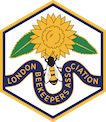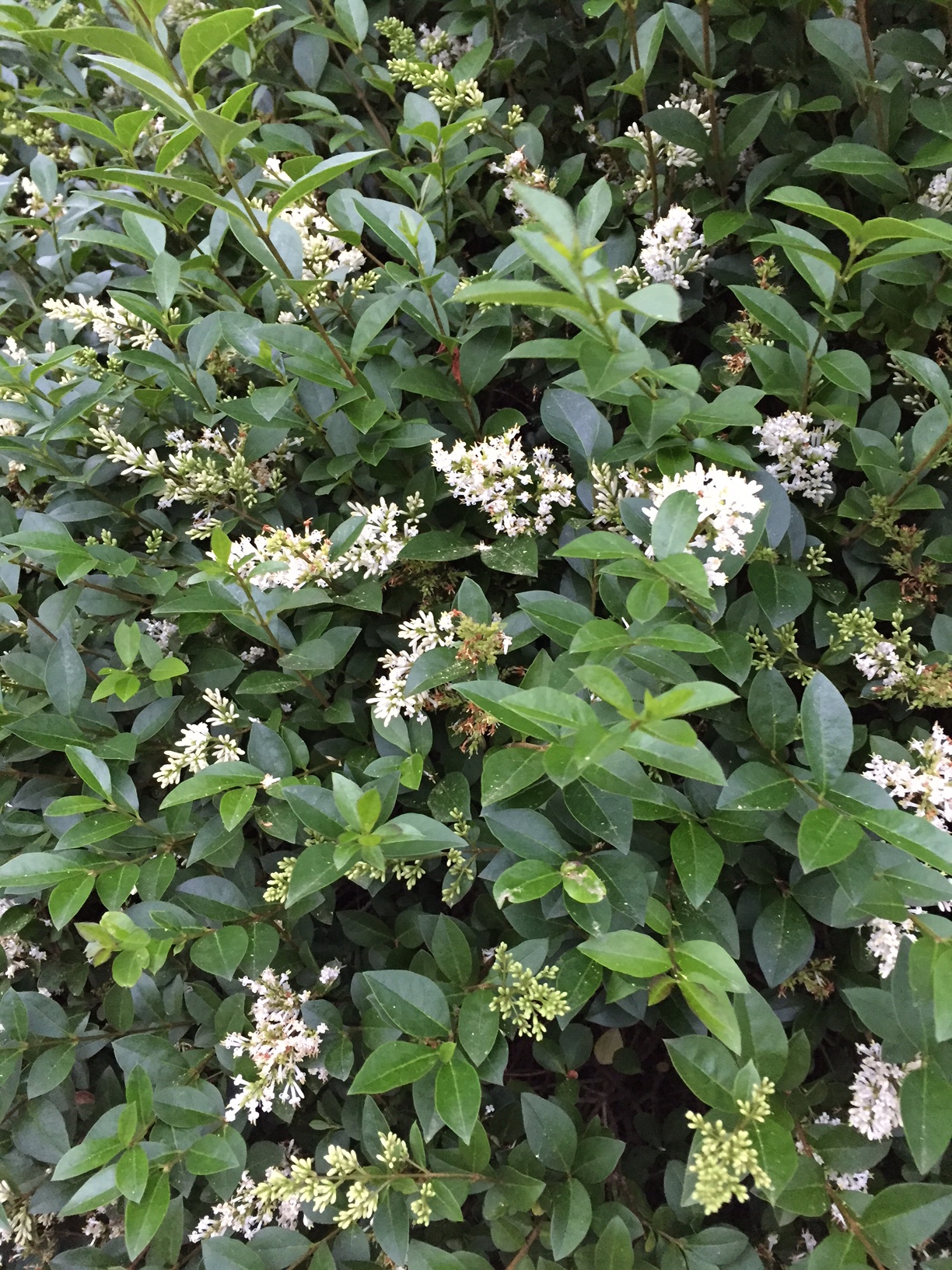
|
London Beekeepers' Association |

|
London Beekeepers' Association |
What's in Flower in July Privet.  Bird's Foot Trefoil [What's in flower, month by month] Mark Patterson As we pass from June into July, all our hopes for a decent harvest now rely upon the Lime trees. Limes are blooming. There are 3 species of limes native to the UK: Large Leaved Lime (Tilia platyphyllos), Small Leaved Lime (Tilia cordata) and a naturally occurring hybrid of the before mentioned two (Tilia x europaea). The small leaved Lime is common throughout England but in the south west it is largely replaced by the large leaved lime which thrives better on the lime-rich soils. Be aware of the Silver Lime (Tila tormentosa) which is an exotic introduction and flowers a bit later than our native limes. Its nectar is toxic to bees and when there is a dearth in forage the bees may mistakenly collect its nectar and in the process become intoxicated before falling comatose beneath the tree. Limes are capable of producing copious volumes of nectar but only if the weather conditions are just right. High soil moisture content from spring rains followed by very warm sultry weather is needed to trigger a good Lime flow. Lime honey is highly sought after as it has a minty aftertaste and tangy tone to it. It's also high in fructose sugars and low in glucose meaning it stays liquid for a long time and resists crystallisation prolonging its shelf life and makes an attractive looking jar of honey for the sales stall. We are fortunate in urban areas to have an abundance of lime trees growing in our parks and side streets. In London limes represent our biggest potential for a bumper honey crop but as mentioned earlier this only becomes a reality when the weather conditions come together at the right time. During a strong lime flow a healthy colony of honey bees can fill a super in a matter of days so it's important you have spare boxes at the ready. Other plants which are important for our bees this month include bramble which should now be in peak flower. Like lime nectar, bramble is mostly fructose which leads to a light fruity honey which seldom crystallises. I am lucky that all my apiaries are bordering over ground railway lines which have an abundance of bramble growing along the sidings. Around water and damp ground Himalayan Balsam is now flowering and will continue to do so right up until late August. Balsam is loved by many Beekeepers for its flowers providing forage in bulk at a time when there is often little else around. It's a contentious plant though, being a non-native plant and highly invasive. It's listed under schedule 9 of the Wildlife and Countryside Act 1981 as illegal to plant, knowingly aiding it, or allowing it to spread. The penalty if found guilty can exceed a \pounds 5000 fine and a criminal record. So please beware of those beekeepers on Internet forums advocating its spread as a plant good for bees! Far better plants suited to damp ground include Water Mint, Purple Loosestrife and Hemp Agrimony which are all loved by bees. Other good sources of forage joining the summer flow this month include Tree of Heaven (Ailanthus altissima), Indian Chestnut (Aesculus indica), Chinese Privet tree (Ligustrum sinense) and Indian bean tree (Catalpa Bignoniodes). All are abundant in urban parks and provide pollen and nectar after all our native trees have ceased flowering. Last year one of our members in north London had their honey analysed by a forensics lab and most of the pollen was from Tree of Heaven. In urban areas shrubs including Choiysia, Cotoneaster, Privet, Philadelphus, Escalonia, Abelia, Santolina and Hebe will continue to attract bees. Elder is just coming to an end along with Dog Rose meaning few native shrubs continue to flower into July. As July progresses our bees become more and more reliant on ground level flora for their forage. Wildflowers like Bugloss, Birds Foot Trefoil, Vetches, Knapweeds, Thistle, wild Thyme, wild Marjoram, Scabious, Teasel and Umbellifers. Plants which many of us associate as `weeds' and try our best to eradicate are often plants important to bees in high summer - among them Ragwort. July and August are the months of the year when most Beekeepers remove their honey harvest but it is also the time of year when our honey bees are flying the furthest to find profitable flower patches. Research undertaken at Sussex University has shown that during July and August Honey Bees are regularly flying as far as 12 km away to forage and their decoded waggle dances indicated that the bees were making a bee line for nearby towns and villages where they can find abundant blooms in our domestic gardens. We can all help make life a little easier for the bees in late summer by making better plant selections in our gardens. You can find planting suggestions on my website along with some good suggestions for plants suitable for balconies and window boxes. |
©2025 London Beekeepers' Association |